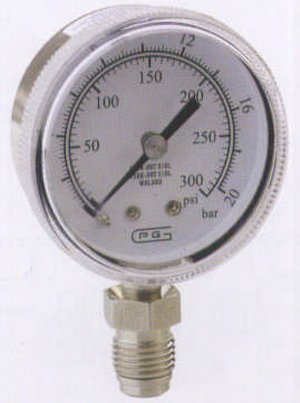
High Purity Gases
1. Argon
Chemical Symbol: Ar
Synonyms: LAR
Description
Argon is a highly inert nonflammable gas of the atmosphere, forms no chemical compounds and dissolves slightly when mixed with water. It is colorless, odorless, tasteless and nontoxic.
Uses
Argon is widely used in filling fluorescent lamps and electronic tubes. It is also used for arc welding and cutting, as well as in the production of titanium, zirconium and other metals. Furthermore, it is used in flushing molten metals to eliminate porosity in castings, and when growing silicon and germanium crystals.
2. Air
Chemical Symbol: None
Synonyms: Compressed air, atmospheric air, the atmosphere (of the earth)
Description
Air is the natural atmosphere of the earth, a nonflammable, colorless, odorless gas that consists of a mixture of gaseous elements (with argon, water vapor, a small amount of carbon dioxide, and traces of many other constitutes).
Uses
Air meeting particular purity specifications has many important applications. Some of these applications are in medical, undersea, aerospace, and atomic energy fields. Air is also used in SCBAs used by industrial, emergency response, and fire fighting personnel, and as a power source for various types of pneumatic equipment.
3. Helium
Chemical Symbol: He
Description
Helium is the lightest element after hydrogen, and represents only 5 ppm of the atmosphere. It is a nonflammable and nontoxic gas. Helium is inert to chemical reactions and radiations. Out of all inert gases, helium has the highest thermal conductivity. The gas is only slightly soluble in water.
Uses
Helium is used for welding and as a lifting gas in balloons. It is also used as a coolant in nuclear reactors and for growing germanium and silicon crystals for transistors, as well as the production of some metals such as titanium and zirconium. Helium is also used for filling cold-water fluorescent lamps as well as laser and fiber optic production. When mixed with oxygen it can be used for diving and medical purposes. Liquid helium is used for cooling superconductive magnets.
4. Hydrogen
Chemical Symbol: H2
Description
Hydrogen is a colorless, odorless, tasteless, flammable and nontoxic gas. It is the lightest element and can be found in the atmosphere with the concentration of about 0.5 ppm. The gas burns in air with an almost invisible light blue color. When mixed with air or oxygen, it has an ignition temperature between 566°C and 579°C. Hydrogen is flammable in dry air when the mixture consists of 4.0 percent to 75.0 percent hydrogen, and between 4.6 percent and 93.9 percent when mixed with oxygen. At temperatures of less than -253°C, hydrogen is in liquid form and its weight is only one fourteenth of the weight of water.
Uses
Hydrogen is used by refineries, petrochemical and bulk chemical facilities for hydro treating, catalytic reforming, and hydro cracking. Hydrogen is used for production of chemicals, such as dyes, catalysts, flavors, fragrances, pesticides, halogen organics, plastic and synthetic fibers, and petroleum. It can also be used for heat treating, metal production, welding and cutting. Food companies use hydrogen to hydrogenate fats, oils and fatty acids for the products such as oleomargarine, soap and industrial greases and oils. In addition, hydrogen is used by glass manufacturers in the production of glass and by electronics manufacturers for production of semiconductors. Liquid hydrogen is used as a fuel for missiles and rockets, as well as in laboratory research.
5. Nitrogen
Chemical Symbol: N2
Synonyms: LIN
Description
Nitrogen is colorless, odorless, tasteless, nontoxic, inert and represents 78.08 percent of the atmosphere. Nitrogen is nonflammable and does not support combustion. It is slightly soluble in water and most other liquids. Nitrogen does not conduct heat and electricity well.
Uses
Nitrogen has a wide range of uses. As a gas it is used for heat treatment, blanketing of oxygen sensitive liquids, production of semiconductor electronic components, blowing of foam type plastic, food processing and packing, inhibition of aerobic bacteria growth and magnesium reduction of aluminum scrap. It is also used for pressurizing aircraft tires and emergency bottles to operate landing gear, as well as purging of air-conditioners, refrigerators, electronic devices, high-voltage compression cables and pipelines.
Liquid nitrogen is used for freezing of perishable foods, deflating of rubber tires, cooling of concrete, cooling of electronic equipment, pulverizing plastics and simulating the conditions in outer space. Furthermore, liquid nitrogen can be used for freezing of liquids in pipelines for emergencies, low temperature stabilization and hardening of metals, preservation of blood, sperm and other biological and refrigeration of foods, as well as in missile and space programs.

 1 / 5
1 / 5
 2 / 5
2 / 5
 3 / 5
3 / 5
 4 / 5
4 / 5
 5 / 5
5 / 5